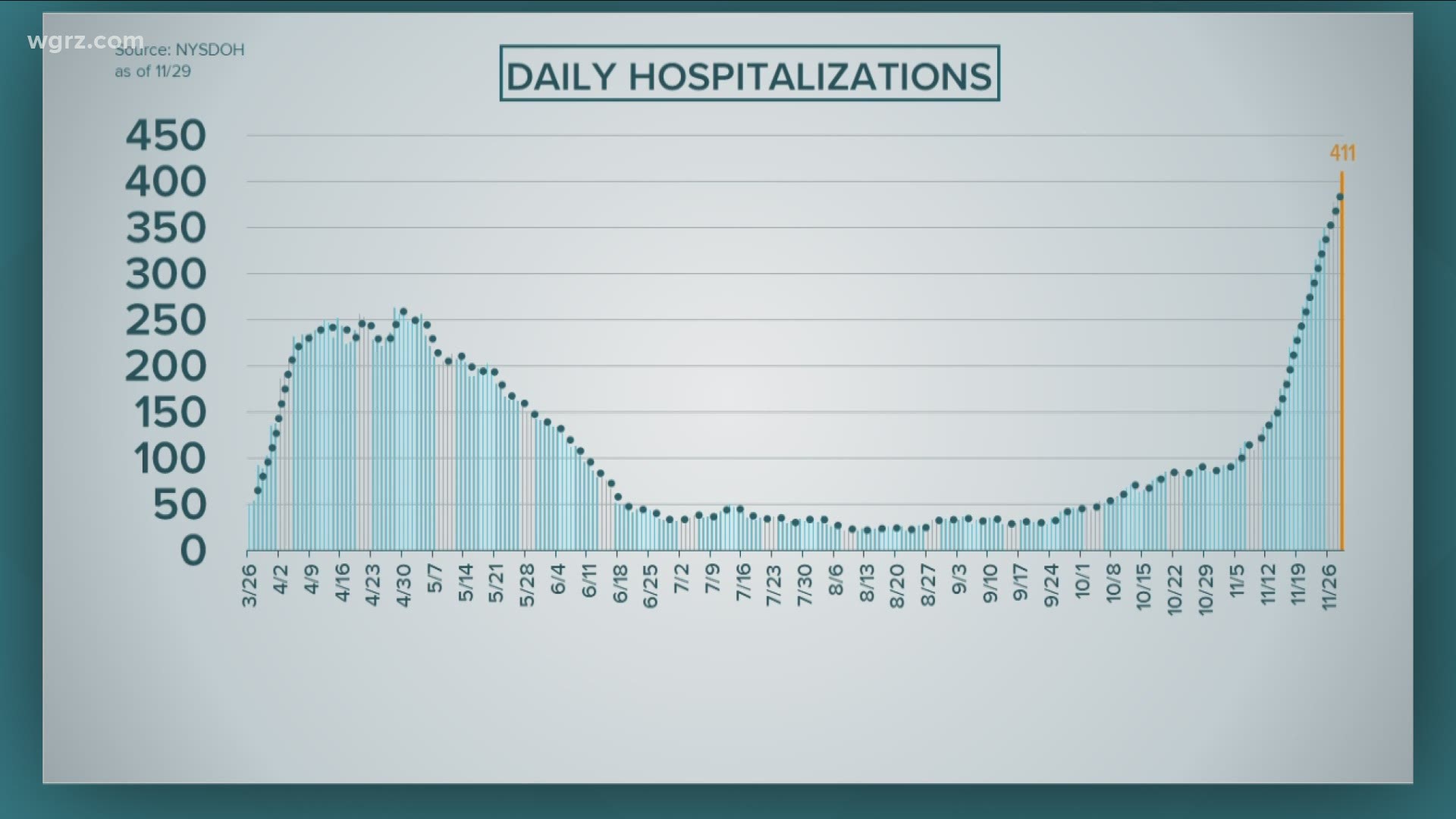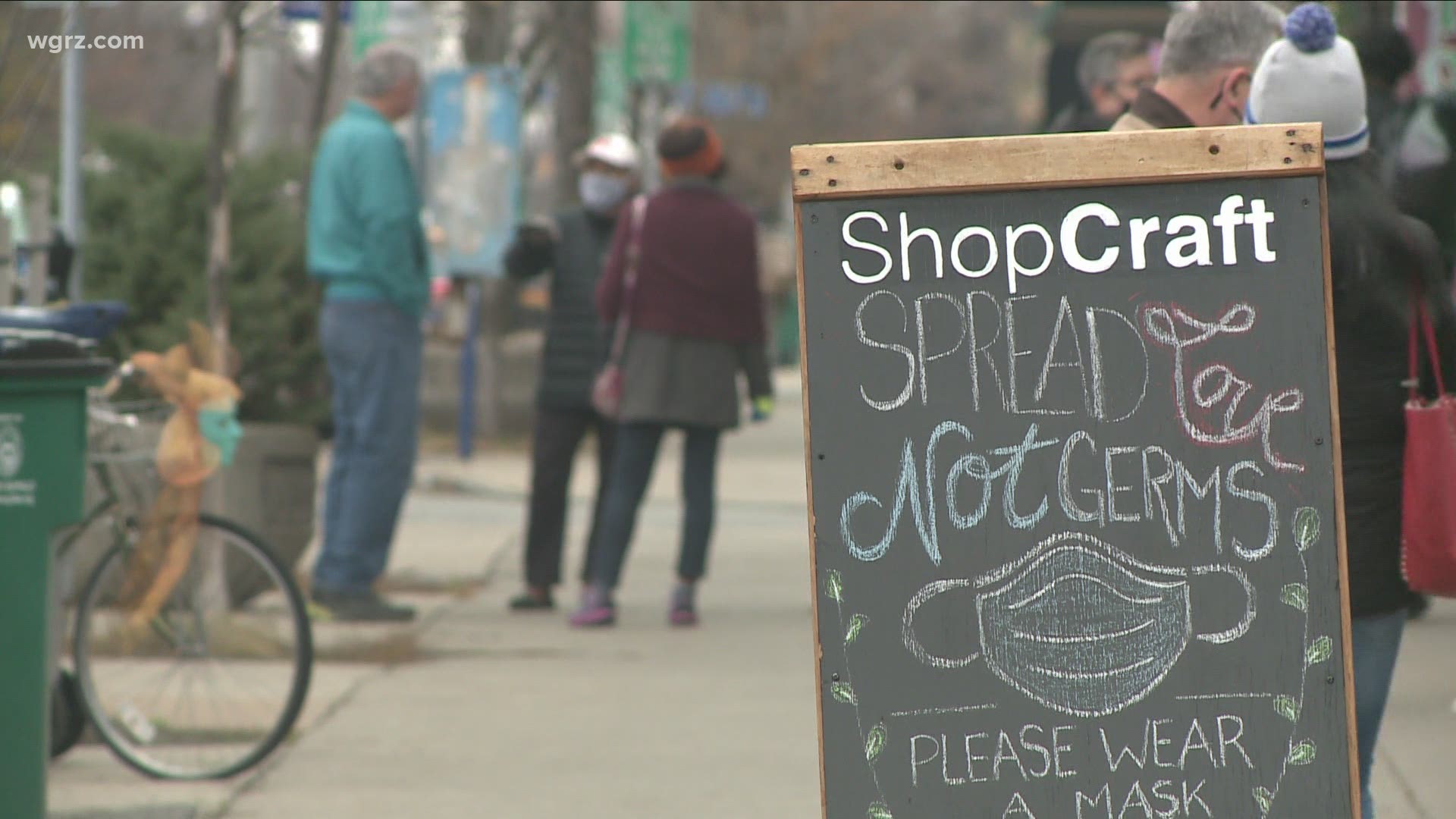BUFFALO, N.Y. — Not only are COVID-19 cases increasing, but so are hospitalizations across the state and here in the Western New York region.
The total number of people hospitalized with COVID-19 in the Western New York region on Sunday, November 29, 2020 was 411. That number is up 25 people from Saturday, November 28.
The total number of people hospitalized with COVID-19 in the region has now been on the increase for 20 consecutive days.
In the spring, during the height of the pandemic across New York State, the longest consecutive streak of days with increasing hospitalizations was seven, and the highest total of COVID-19 patients hospitalized at one time was 263.
There are currently 86 COVID-19 patients in the ICU in the region, which is still below the highest point in the spring when 130 patients were in the ICU.
During a briefing on Monday, November 30, New York Governor Andrew Cuomo stated that he is concerned about hospitals in this new phase of COVID-19.
"We are now worried about overwhelming the hospital system...you will see serious stress on the hospital system,"
Cuomo warned that if hospitals do get overwhelmed, there is a chance the state could call for a NY pause.
The Western New York region includes Erie, Niagara, Chautauqua, Cattaraugus and Allegany counties.
Human coronaviruses are usually spread through...
- The air by coughing or sneezing
- Close personal contact, such as touching or shaking hands
- Touching an object or surface with the virus on it, then touching your mouth, nose or eyes before washing your hands.
Help stop the spread of coronavirus
- Stay home when you are sick.
- Eat and sleep separately from your family members
- Use different utensils and dishes
- Cover your cough or sneeze with your arm, hot your hand.
- If you use a tissue, throw it in the trash.
Lower your risk
- Wash your hands often with soap and water for at least 20 seconds. If soap and water are not available, use an alcohol-based hand sanitizer.
- Avoid touching your eyes, nose, and mouth with unwashed hands.
- Avoid close contact with people who are sick.
- Clean and disinfect frequently touched objects and surfaces.
- If you are 60 or over and have an underlying health condition such as cardiovascular disease, diabetes or respiratory illnesses like asthma or COPD, the World Health Organization advises you to try to avoid crowds or places where you might interact with people who are sick.


